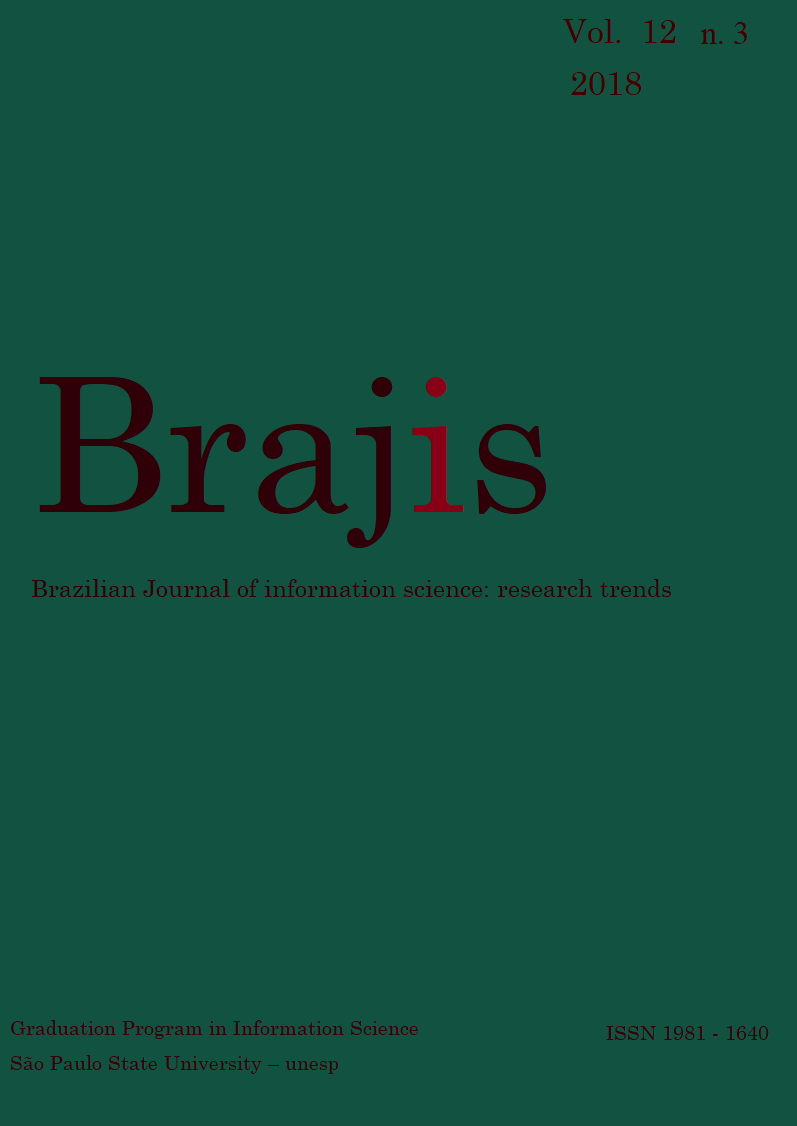O tratamento dos objetos virtuais de aprendizagem como recursos informacionais na criação, uso e recuperação da informação
DOI:
https://doi.org/10.36311/1981-1640.2018.v12n3.05.p41Keywords:
OVA, Recurso Informacional, Recuperação da Informação, Organização e Representação, da Informação, Uso, ReusoAbstract
O conceito de OVA se aproxima do conceito de recursos informacionais, sendo descrito como fontes capazes de suprir as demandas de informação de um individuo ou de uma coletividade nas mais variadas áreas do conhecimento, recorrendo a formatos e suportes diferenciados. A informação cientifica, informação tecnológica, informação cientifica e tecnológica e a comunicação cientifica são classificados como recursos informacionais. A Organização e Representação da Informação utiliza dos conceitos e instrumentos e processos para o tratamento da informação, como: descrição, classificação, indexação, armazenamento e, posteriormente, a recuperação dessa informação que, se executada de forma coerente, pode gerar a produção de conhecimento. A criação de um OVA se caracteriza como um processo que necessita destes processos para ser estruturado e para que suas informações sejam recuperadas. Neste sentido, o objetivo deste artigo é discutir o OVA como um elemento que, tendo todas as características descritas, pode ser incluído nas discussões referentes à metadados e aos processos de recuperação da informação por sua característica de recurso informacional. Considera-se que o OVA possui importância significativa quando percebido no âmbito da Organização e Representação da Informação por ser um recurso informacional utilizado na organização e na recuperação de informações para a construção de material didático, no entanto, ainda necessita de maiores incursões teóricas que elucidem as perspectivas possíveis de discussão.
Downloads
References
Downloads
Published
Issue
Section
License
When submitting an article, the authors retain the copyright of the article, giving full rights to the Brazilian Journal of Information Science to publish the text.
The author(s) agree that the article, if editorially accepted for publication, shall be licensed under the Creative Commons Attribution-ShareAlike 4.0 International (CC BY-SA 4.0) license (http://creativecommons.org/licenses/by-sa/4.0) Readers/users are free to: - Share — copy and redistribute the material in any medium or format - Adapt — remix, transform, and build upon the material for any purpose, even commercially. The licensor cannot revoke these freedoms as long as you follow the license terms. Under the following terms: - Attribution — You must give appropriate credit, provide a link to the license, and indicate if changes were made. You may do so in any reasonable manner, but not in any way that suggests the licensor endorses you or your use. - ShareAlike — If you remix, transform, or build upon the material, you must distribute your contributions under the same license as the original. No additional restrictions — You may not apply legal terms or technological measures that legally restrict others from doing anything the license permits. Notices: - You do not have to comply with the license for elements of the material in the public domain or where your use is permitted by an applicable exception or limitation. - No warranties are given. The license may not give you all of the permissions necessary for your intended use. For example, other rights such as publicity, privacy, or moral rights may limit how you use the material.
 Creative Commons Attribution-ShareAlike 4.0 International License.
Creative Commons Attribution-ShareAlike 4.0 International License.







